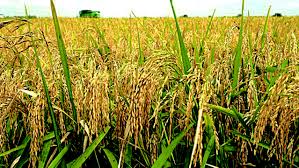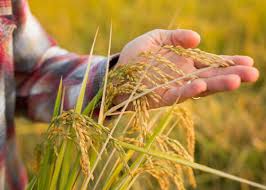The Advantages of Being a Rice Farmer
A rice farmer is an agricultural practitioner engaged in cultivating and harvesting rice crops, typically in paddy fields or flooded areas. These farmers play a crucial role in ensuring the production of one of the world’s staple foods, contributing to global food security and sustaining livelihoods in regions where rice cultivation is prevalent.
Rice farming is a crucial and ancient practice that sustains communities worldwide. A rice farmer’s daily life revolves around the cultivation of rice paddies, where they nurture and harvest this staple food.
From dawn till dusk, a rice farmer toils in the fields, meticulously tending to the delicate rice plants. The farmer begins by preparing the land, carefully plowing and leveling the soil to create the perfect conditions for rice cultivation. This process, though physically demanding, is the foundation of a bountiful harvest.
Planting season marks a significant milestone for the rice farmer. With seeds in hand, they methodically sow the rice, ensuring proper spacing for optimal growth. Patience becomes a virtue as the farmer watches over the paddies, anticipating the emergence of vibrant green shoots.
As the rice plants mature, the farmer engages in meticulous care, monitoring water levels to mimic the flooded conditions that rice thrives in. The rhythmic sounds of water buffaloes plowing through the paddies become synonymous with the rice farming experience, showcasing the close bond between the farmer and their trusted animals.
Harvest time is both a celebration and a culmination of the farmer’s hard work. Armed with sickles, the rice farmer harvests the golden grains, a testament to their dedication and connection to the land. The sense of accomplishment during this season is profound, as the bounty of rice symbolizes sustenance for the community.
Post-harvest, the rice undergoes processing, another integral step in the farmer’s journey. Traditional methods may involve threshing and winnowing, separating the grains from the husks. In modern times, technological advancements have streamlined this process, yet the essence of the rice farmer’s role remains unchanged.
Beyond the fields, the rice farmer contributes to the cultural fabric of their community. Festivals and rituals centered around the rice harvest are a testament to the deep-rooted significance of rice in many societies. The rice farmer, often viewed with respect, becomes a symbol of resilience and hard work.
In the face of challenges such as changing weather patterns and evolving agricultural practices, the rice farmer adapts, showcasing a remarkable blend of tradition and innovation. Their ability to sustain this timeless practice speaks to the importance of rice not only as a food source but as a cultural touchstone.
The life of a rice farmer is one of dedication, hard work, and a profound connection to the land. As they navigate the cycles of planting, nurturing, and harvesting, rice farmers play a pivotal role in ensuring the sustenance of communities and preserving a heritage that has withstood the test of time.
Read Also: Everything You Need To Know About Floratam Sod Grass
Importance of Rice Farming

The importance of rice farming extends far beyond the fields, influencing various aspects of society, economy, and culture.
1. Food Security: Rice, as a staple food for over half of the world’s population, holds immense importance in global food security. The efforts of rice farmers contribute directly to ensuring a stable and sufficient food supply, particularly in regions where rice is a dietary cornerstone.
2. Economic Impact: Rice farming is a significant driver of economic activity in many regions. The cultivation, processing, and distribution of rice create employment opportunities, supporting livelihoods for numerous individuals involved in the agricultural value chain. The economic impact also extends to industries related to rice production, such as equipment manufacturing and transportation.
3. Cultural Significance: Rice farming is deeply ingrained in the cultural heritage of many societies. Rituals, festivals, and traditions associated with rice harvesting form an integral part of community identity. The rice farmer, through their labor, becomes a custodian of cultural practices that are passed down through generations.
4. Environmental Stewardship: Rice paddies, when managed sustainably, contribute to environmental well-being. The flooded conditions required for rice cultivation act as a natural habitat for diverse flora and fauna. Additionally, rice fields can play a role in water conservation and flood control when integrated into thoughtful agricultural practices.
5. Rural Development: Rice farming often takes place in rural areas, and the prosperity of these communities is closely tied to the success of agriculture. Successful rice farming can stimulate rural development by providing income, improving infrastructure, and fostering a sense of community well-being.
6. Global Trade and Interdependence: As a globally traded commodity, rice connects regions and nations through economic exchanges. The interdependence created by rice trade fosters international cooperation and diplomacy, highlighting the interconnectedness of the global agricultural landscape.
7. Nutritional Impact: Rice is a primary source of nutrition for billions of people, providing essential carbohydrates and other nutrients. The work of rice farmers directly influences the availability of this nutritional resource, impacting the health and well-being of communities.
In essence, the importance of rice farming is multifaceted, reaching into the realms of food security, culture, economics, and environmental sustainability. The labor of rice farmers sustains not only individuals and communities but also contributes to the broader tapestry of our interconnected world.
How to Start a Rice Farm
Starting a rice farm is an exciting venture that requires careful planning and hard work. Here are simple steps to help you begin:
1. Select a Suitable Location: Choose a flat or gently sloping land with access to water. Rice needs a lot of water, so being close to a water source is crucial.
2. Prepare the Soil: Plow and level the field to create a smooth surface. Rice grows best in well-drained soils. Add organic matter like compost to improve soil fertility.
3. Choose the Right Rice Variety: There are different types of rice, such as long-grain, medium-grain, and short-grain. Pick a variety that suits your climate and soil conditions.
4. Planting Seeds: You can either directly sow seeds in the field or start with seedlings in a nursery. Plant the seeds at the right depth and spacing, ensuring they have enough room to grow.
5. Water Management: Rice needs consistent water supply, especially during the growing season. Ensure proper irrigation, whether through flooding or controlled water levels.
6. Weed Control: Regularly remove weeds that compete with rice for nutrients and space. This helps the rice plants grow better.
7. Fertilization: Apply appropriate fertilizers to provide essential nutrients for the rice plants. This ensures healthy growth and higher yields.
8. Pest and Disease Management: Keep an eye out for pests and diseases. Use natural methods or pesticides as needed to protect your crop.
9. Harvesting: Harvest the rice when the grains are fully developed and have turned golden. Use a combine harvester or traditional methods like cutting and threshing.
10. Drying and Storage: Dry the harvested rice to reduce moisture content. Properly store the rice in a cool, dry place to prevent spoilage.
11. Marketing and Selling: Once your rice is ready, find markets or local buyers to sell your produce. You can also explore selling through local markets or cooperatives.
Remember, learning from local experts and agricultural extension services can provide valuable insights tailored to your specific region. Good luck with your rice farming venture.
Read Also: A Guide to Growing and Caring for Plume Grass (Feather Grass)
Challenges Faced in Rice Farming and Solutions

Here are some common challenges Fice Farmers face with possible solutions to them:
Challenges in Rice Farming:
1. Water Management: Rice requires a significant amount of water, leading to challenges in water availability, especially in areas with irregular rainfall or limited irrigation facilities.
2. Pests and Diseases: Rice is susceptible to various pests and diseases that can reduce yields. Common pests include insects like stem borers, while diseases like blast and bacterial leaf blight can affect the crop.
3. Weed Control: Weeds compete with rice plants for nutrients and sunlight, impacting growth. Manual weeding can be labor-intensive and time-consuming.
4. Soil Fertility: Continuous rice cultivation can deplete soil nutrients. Maintaining soil fertility becomes crucial to ensure healthy plant growth and sustainable yields.
5. Climate Change: Changes in weather patterns, such as unpredictable rainfall or temperature variations, can adversely affect rice cultivation.
6. High Production Costs: Inputs like seeds, fertilizers, and pesticides can contribute to high production costs, impacting the profitability of rice farming.
Solutions:
1. Improved Water Management: Implement efficient irrigation systems, such as drip or sprinkler irrigation, to optimize water use. Consider rainwater harvesting and water conservation practices.
2. Integrated Pest Management (IPM): Adopt IPM strategies, including biological control methods and resistant varieties. Regular monitoring helps detect pest and disease issues early.
3. Mechanical Weed Control: Use mechanical methods like rotary weeders or herbicide application to control weeds. Crop rotation can also help break weed and pest cycles.
4. Crop Diversification: Introduce crop rotation with legumes or other crops to enhance soil fertility. Incorporate cover crops to prevent soil erosion and add organic matter.
5. Climate-Resilient Varieties: Select rice varieties that are tolerant to climatic variations, such as drought-resistant or flood-tolerant strains.
6. Precision Farming: Embrace precision farming technologies to optimize resource use. This includes precision irrigation, fertilization, and use of sensors for monitoring crop health.
7. Government Support and Subsidies: Seek government programs that provide subsidies on inputs or equipment, making rice farming more economically viable.
8. Training and Extension Services: Access agricultural extension services for guidance on best practices, new technologies, and pest management strategies. Continuous education helps farmers stay updated.
Addressing these challenges requires a holistic and adaptive approach, considering the specific conditions of each rice farming region. Collaborating with local agricultural experts and organizations can provide valuable insights tailored to your farming context.
Read Also: The Magic of Reading Aloud to Babies








